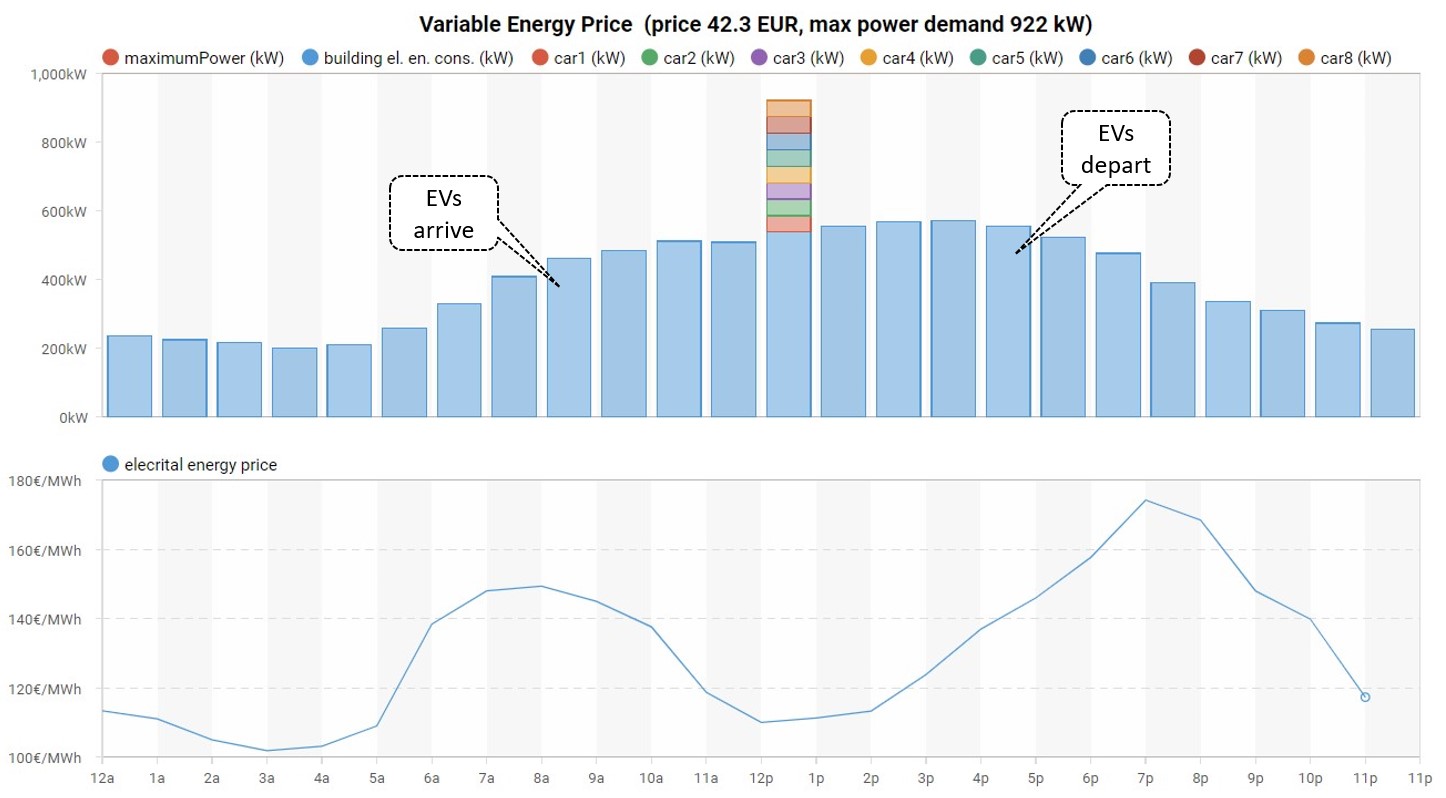In recent years, there has been a significant increase in demand for EVs. However, there are numerous challenges associated with EV charging, such as multiple EV charging strategy optimization. Numerous factors affect optimal charging strategies, but we will focus on the following:
1) Power Demand
When installing multiple EV chargers in an office building, one must carefully consider power demand in order to avoid exceeding the maximum power demand resulting in hefty costs.
2) Variable Energy Price
Flat energy tariffs are becoming obsolete, and nowadays, time-of-use tariffs are on the rise resulting in price optimization.
The solution to multiple EV charging lies in mathematical optimization, which seeks to minimise the cost of electrical energy purchase while taking into account all constraints. We need to know the prediction of the building’s electrical energy consumption, maximum power demand, electrical energy price profile, and EV information. A flexible charging strategy for new arrivals should also be considered.
We will look at three different scenarios of multiple EVs charging under simplified conditions. At 8 a.m., eight EVs will arrive, each with the following characteristics:
30% initial battery state
scheduled departure time at 4 p.m
requested battery state at the time of expected departure 90%
battery capacity 80 kWh
maximum charging power 50 kW
Simulations
Using Energy Twin, the building’s power load predictions are calculated. In all three experiments you will see the energy profile of the office building, individual arrival of the EVs and the electrical energy price prediction for the day.
The first scenario shows the basic strategy – EVs are charged immediately after being plugged in. The possible drawbacks of this strategy lie the high cost of energy in the morning, which correlates with the EVs‘ arrival time and high power demand.

The second scenario takes variable energy prices into account, allowing the mathematical optimization to find the solution with the lowest charging price. That’s an improvement. The charging time, on the other hand, overlaps with the cooling demand of the building’s HVAC system, resulting in an even higher power demand. This disadvantage is addressed in the third scenario.

Power demand is added as a new constraint to the optimization problem in the third scenario. This means that the total of predicted own building consumption and EV charging power must be kept below the maximum power demand threshold. As a result, EVs are charged during the day at slightly higher rates in order to spread the charging and reduce the maximum power demand.

The above experiments were only hints at the difficulties associated with charging multiple EVs. The simulation demonstrates how critical it is to use machine learning and predictions to develop optimal charging strategies that allow us to better manage energy.


